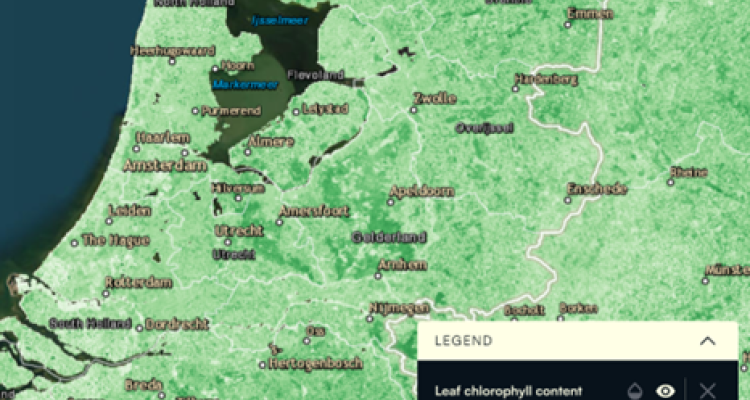
Student information
MSc thesis topic: Unmixing the SIF signal across land cover and spatial scales
Sun-induced Chlorophyll Fluorescence is an important measure of vegetation status, but it is difficult to quantify as it is a weak signal compared to the light reflected from the sun. Most experiments with SIF are done at a plant level in the lab, or at a canopy level in the field. The SIF signal is affected by multiple scattering in the canopy, shading, and environmental effects such as wind and cloud cover. Not enough research has been done so far on how SIF is expressed on different types of crops and land cover, and how the signal varies across scales. Given the upcoming ESA FLEX mission, that will measure SIF globally at 300 m resolution, it is important to understand how its imagery will relate to the within-field/plot variation that is typically observable from aerial or UAV scales.
The objective of this topic is to compare how SIF varies within different land cover classes, making use of land cover fraction estimation, across the UAV-aerial scale and across aerial-satellite scale. It will involve deriving land cover fractions of a variety of crops, bare soil, impervious surface, and natural vegetation, and linking these fractions to SIF measurements obtained from a UAV platform, HyPlant aeroplane, and satellite imagery.
Relevance to research/projects at GRS or other groups
The research topic is part on an ongoing field of research into measuring and modelling SIF within the GRS group, led by prof. Lammert Kooistra.
Objectives and Research questions
- How does SIF vary among and across different land cover fractions?
- How does the link between SIF and land cover fractions vary across the UAV-aerial and aerial-satellite scales?
Requirements
- Required: Geoscripting, Remote Sensing
- Optional: Advanced Earth Observation, Machine Learning
Expected reading list before starting the thesis research
- Masiliūnas, D., Tsendbazar, N.-E., Herold, M., Lesiv, M., Buchhorn, M., & Verbesselt, J. (2021). Global land characterisation using land cover fractions at 100 m resolution. Remote Sensing of Environment, 259, 112409.
- Mohammed et al (2019). Remote sensing of solar-induced chlorophyll fluorescence (SIF) in vegetation: 50 years of progress.
- N Wang, B Siegmann, U Rascher, JGPW Clevers, O Muller, ..., 2022. Comparison of a UAV-and an airborne-based system to acquire far-red sun-induced chlorophyll fluorescence measurements over structurally different crops. Agricultural and Forest Meteorology 323, 109081.
Theme(s): Sensing & measuring, Integrated Land Monitoring